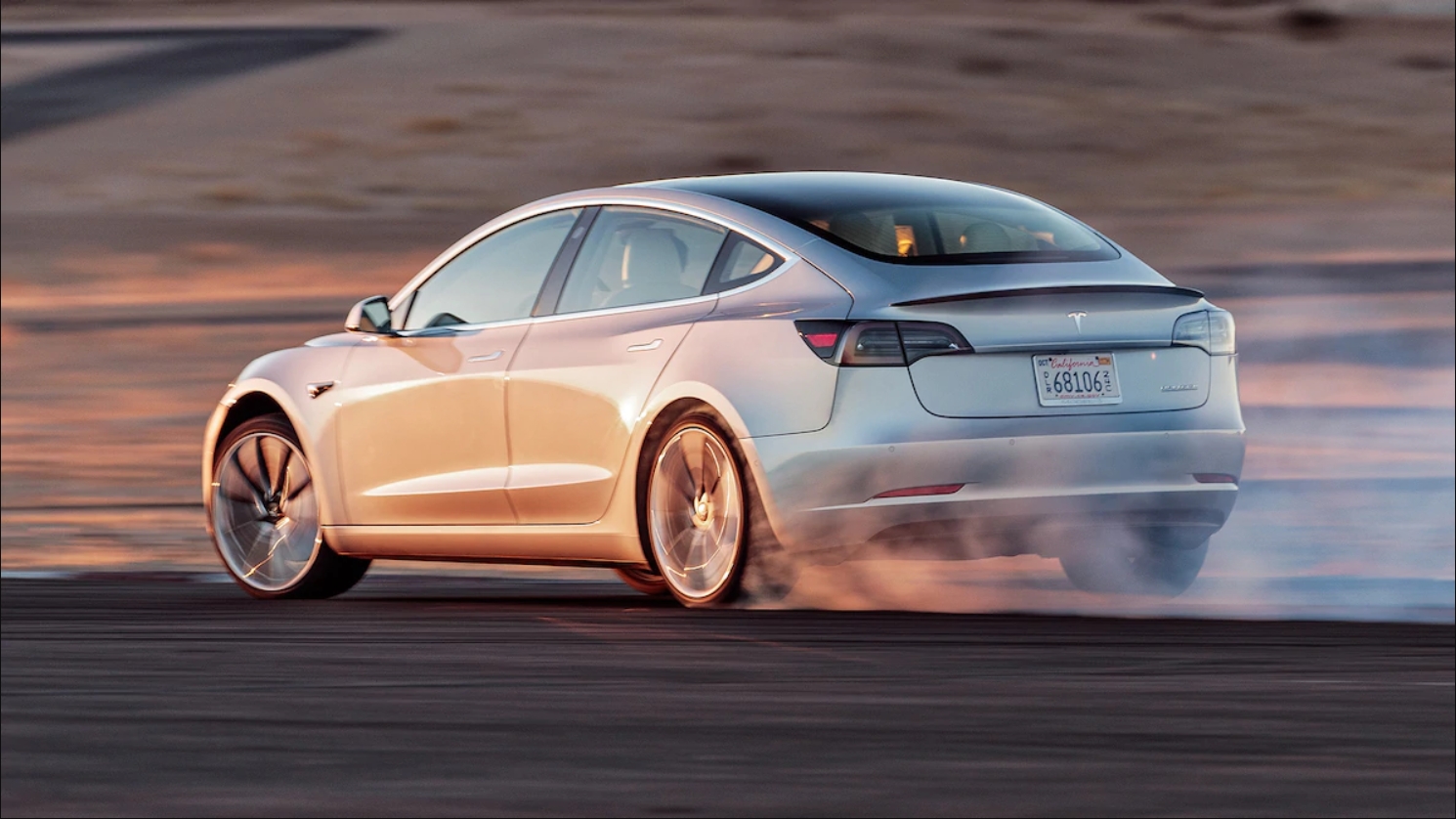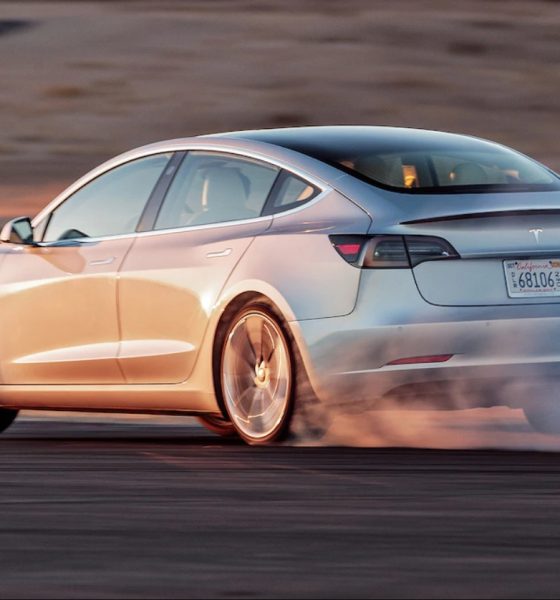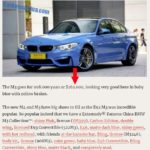

News
Tesla Model 3 Performance targets BMW M3 with ultra-competitive pricing in China
Following an announcement from authorities about the upcoming suspension of extra tariffs placed on vehicles imported from the United States, Tesla has reduced the pricing of some Model S and Model X variants in China. The Model 3, which is expected to start deliveries next year, also received some price adjustments.
As it turns out, the recent price reduction to the Model 3 Performance has made the vehicle incredibly competitive in price against rivals like the BMW M3 and the Mercedes-AMG C 63 Coupe. When Tesla initially allowed Chinese reservation holders to configure their Model 3, the Performance variant was listed with a price of 689,000 RMB (roughly $100,000). With the recent adjustments, though, the Performance variant’s price has been reduced to just 560,000 RMB (around $81,000).
By adopting such a pricing strategy, Tesla has all but made the Model 3 Performance as one of the best bang-for-the-buck sports sedans in the country. After all, the BMW M3 — a vehicle that the all-electric car is competing with — currently sells for 998,000 RMB ($162,000). The Mercedes-AMG C 63 Coupe, another high-performance, luxury sedan competing in the same market, currently costs 1,198,000 RMB ($173,623).
- The Tesla Model 3 Performance’s current price in China. (Photo: vincent13031925/Twitter)
- The BMW M3’s price in the Chinese market. (Photo: vincent13031925/Twitter)
- A screenshot of the Mercedes-AMG C 63 Coupe’s pricing in China. (Photo: vincent13031925/Twitter)
The current prices of the Model 3 Performance, BMW M3 and Mercedes-AMG C 63 Coupe in China. (Credit: vincent13031925/Twitter)
With instant torque, superior 0-60 mph times, free over-the-air updates, and Enhanced Autopilot, the Model 3 Performance’s 560,000 RMB price is nothing short of a bargain. Being an all-electric car, the Model 3 Performance is also a zero-emissions vehicle, making it a perfect fit for China’s aggressive push towards the adoption of EVs. With even its price being an advantage against its rivals, it would not be surprising if the Tesla Model 3 Performance ends up outselling its ICE-powered rivals in China.
Since adjusting the prices of its vehicles, Tesla’s stores in the Asian economic powerhouse have experienced a large influx of customers. Reports from local media outlets, for one, noted that numerous electric car buyers visited Tesla’s retail stores after the Model S and X’s prices were lowered. It did not take long before Tesla began sending out emails to customers apologizing for delays resulting from the increase in demand for its vehicles.
“Dear customers who have been appointed:
Due to the adjustment of tariffs & new pricing, the biz volume in these 2 days is skyrocketing. We will send new contract to everyone tonight. Plz be patient. TY for ur support & love for @Tesla China.”
thx @bruceyanchen $TSLA pic.twitter.com/t4qQ5nv0vh— vincent (@vincent13031925) December 18, 2018
Tesla’s electric cars might already be more affordable with their updated prices, but the company is aiming to lower the cost of its vehicles even further. The electric car maker is currently in the process of building Gigafactory 3, a facility that produces both battery packs and electric cars. Reports from local Chinese media have suggested that the factory would start producing vehicles in the second half of 2019. Two vehicles will be manufactured in Gigafactory 3 — the Model 3 sedan and the Model Y SUV, both of which are set to compete with mainstream local-made EVs.
The construction of Gigafactory 3 is already underway. Recent drone footage reveals that a perimeter fence has been set up in the company’s 864,885-square meter plot of land in Shanghai’s Lingang Industrial Zone. The site has been attracting a lot of interest from the country’s workforce as well, with a recent job fair getting extended due to the overwhelming number of applicants applying for openings on Gigafactory 3.

Elon Musk
Elon Musk’s X will start using a Tesla-like software update strategy
The initiative seems designed to accelerate updates to the social media platform, while maintaining maximum transparency.

Elon Musk’s social media platform X will adopt a Tesla-esque approach to software updates for its algorithm.
The initiative seems designed to accelerate updates to the social media platform, while maintaining maximum transparency.
X’s updates to its updates
As per Musk in a post on X, the social media company will be making a new algorithm to determine what organic and advertising posts are recommended to users. These updates would then be repeated every four weeks.
“We will make the new 𝕏 algorithm, including all code used to determine what organic and advertising posts are recommended to users, open source in 7 days. This will be repeated every 4 weeks, with comprehensive developer notes, to help you understand what changed,” Musk wrote in his post.
The initiative somewhat mirrors Tesla’s over-the-air update model, where vehicle software is regularly refined and pushed to users with detailed release notes. This should allow users to better understand the details of X’s every update and foster a healthy feedback loop for the social media platform.
xAI and X
X, formerly Twitter, has been acquired by Elon Musk’s artificial intelligence startup, xAI last year. Since then, xAI has seen a rapid rise in valuation. Following the company’s the company’s upsized $20 billion Series E funding round, estimates now suggest that xAI is worth tens about $230 to $235 billion. That’s several times larger than Tesla when Elon Musk received his controversial 2018 CEO Performance Award.
As per xAI, the Series E funding round attracted a diverse group of investors, including Valor Equity Partners, Stepstone Group, Fidelity Management & Research Company, Qatar Investment Authority, MGX, and Baron Capital Group, among others. Strategic partners NVIDIA and Cisco Investments also continued support for building the world’s largest GPU clusters.
News
Tesla FSD Supervised wins MotorTrend’s Best Driver Assistance Award
The decision marks a notable reversal for the publication from prior years, with judges citing major real-world improvements that pushed Tesla’s latest FSD software ahead of every competing ADAS system.

Tesla’s Full Self-Driving (Supervised) system has been named the best driver-assistance technology on the market, earning top honors at the 2026 MotorTrend Best Tech Awards.
The decision marks a notable reversal for the publication from prior years, with judges citing major real-world improvements that pushed Tesla’s latest FSD software ahead of every competing ADAS system. And it wasn’t even close.
MotorTrend reverses course
MotorTrend awarded Tesla FSD (Supervised) its 2026 Best Tech Driver Assistance title after extensive testing of the latest v14 software. The publication acknowledged that it had previously criticized earlier versions of FSD for erratic behavior and near-miss incidents, ultimately favoring rivals such as GM’s Super Cruise in earlier evaluations.
According to MotorTrend, the newest iteration of FSD resolved many of those shortcomings. Testers said v14 showed far smoother behavior in complex urban scenarios, including unprotected left turns, traffic circles, emergency vehicles, and dense city streets. While the system still requires constant driver supervision, judges concluded that no other advanced driver-assistance system currently matches its breadth of capability.
Unlike rival systems that rely on combinations of cameras, radar, lidar, and mapped highways, Tesla’s FSD operates using a camera-only approach and is capable of driving on city streets, rural roads, and freeways. MotorTrend stated that pure utility, the ability to handle nearly all road types, ultimately separated FSD from competitors like Ford BlueCruise, GM Super Cruise, and BMW’s Highway Assistant.
High cost and high capability
MotorTrend also addressed FSD’s pricing, which remains significantly higher than rival systems. Tesla currently charges $8,000 for a one-time purchase or $99 per month for a subscription, compared with far lower upfront and subscription costs from other automakers. The publication noted that the premium is justified given FSD’s unmatched scope and continuous software evolution.
Safety remained a central focus of the evaluation. While testers reported collision-free operation over thousands of miles, they noted ongoing concerns around FSD’s configurable driving modes, including options that allow aggressive driving and speeds beyond posted limits. MotorTrend emphasized that, like all Level 2 systems, FSD still depends on a fully attentive human driver at all times.
Despite those caveats, the publication concluded that Tesla’s rapid software progress fundamentally reshaped the competitive landscape. For drivers seeking the most capable hands-on driver-assistance system available today, MotorTrend concluded Tesla FSD (Supervised) now stands alone at the top.
News
Elon Musk’s Grokipedia surges to 5.6M articles, almost 79% of English Wikipedia
The explosive growth marks a major milestone for the AI-powered online encyclopedia, which was launched by Elon Musk’s xAI just months ago.

Elon Musk’s Grokipedia has grown to an impressive 5,615,201 articles as of today, closing in on 79% of the English Wikipedia’s current total of 7,119,376 articles.
The explosive growth marks a major milestone for the AI-powered online encyclopedia, which was launched by Elon Musk’s xAI just months ago. Needless to say, it would only be a matter of time before Grokipedia exceeds English Wikipedia in sheer volume.
Grokipedia’s rapid growth
xAI’s vision for Grokipedia emphasizes neutrality, while Grok’s reasoning capabilities allow for fast drafting and fact-checking. When Elon Musk announced the initiative in late September 2025, he noted that Grokipedia would be an improvement to Wikipedia because it would be designed to avoid bias.
At the time, Musk noted that Grokipedia “is a necessary step towards the xAI goal of understanding the Universe.”
Grokipedia was launched in late October, and while xAI was careful to list it only as Version 0.1 at the time, the online encyclopedia immediately earned praise. Wikipedia co-founder Larry Sanger highlighted the project’s innovative approach, noting how it leverages AI to fill knowledge gaps and enable rapid updates. Netizens also observed how Grokipedia tends to present articles in a more objective manner compared to Wikipedia, which is edited by humans.
Elon Musk’s ambitious plans
With 5,615,201 total articles, Grokipedia has now grown to almost 79% of English Wikipedia’s article base. This is incredibly quick, though Grokipedia remains text-only for now. xAI, for its part, has now updated the online encyclopedia’s iteration to v0.2.
Elon Musk has shared bold ideas for Grokipedia, including sending a record of the entire knowledge base to space as part of xAI’s mission to preserve and expand human understanding. At some point, Musk stated that Grokipedia will be renamed to Encyclopedia Galactica, and it will be sent to the cosmos.
“When Grokipedia is good enough (long way to go), we will change the name to Encyclopedia Galactica. It will be an open source distillation of all knowledge, including audio, images and video. Join xAI to help build the sci-fi version of the Library of Alexandria!” Musk wrote, adding in a later post that “Copies will be etched in stone and sent to the Moon, Mars and beyond. This time, it will not be lost.”











